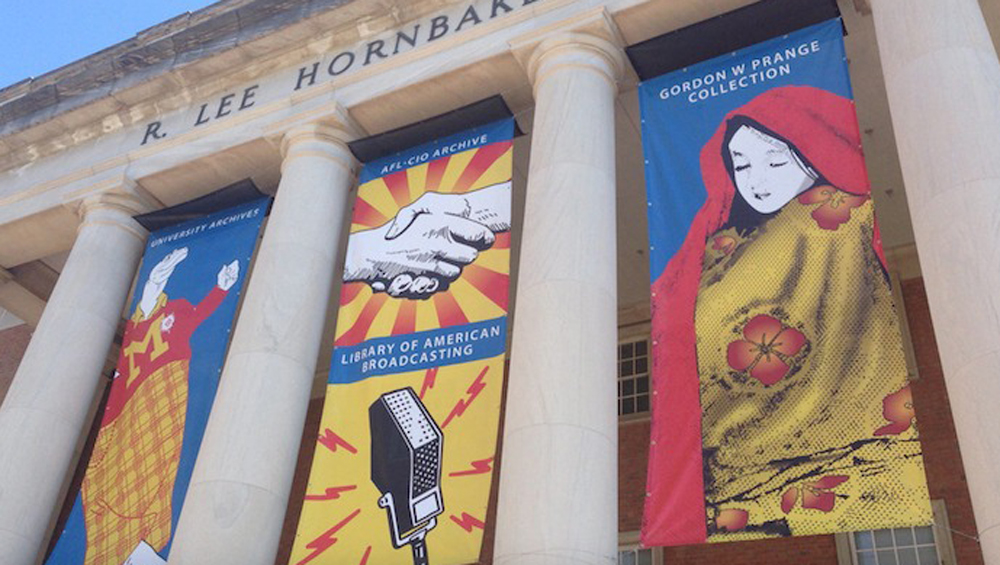
TV Archives Are Vital History, And Too Often Discarded


Mary Collins
About 15 years ago, Antioch College’s student radio station, WYSO-FM, was preparing to move to a different building on the school’s Yellow Springs, Ohio, campus. Staff was responsible for clearing out everything that had accumulated since the station’s founding in 1958. In a storeroom they found recordings dating back to the station’s earliest days, all of which had been put away with the same care college students use when packing at the end of the year.
You can imagine — reel-to-reel tapes, cassettes and other audio storage media all stuffed into boxes and garbage bags. Many of the items were so covered in mold that labels were unreadable. The magnetic tapes themselves were in various states of decomposition. Fortunately, someone took the time to do some investigation instead of relegating the whole mess to a dumpster. What they found was an audio record of the prior 50 years composed of concerts, interviews, lectures and voices ranging from those of Susan Sontag and Cesar Chavez to Dick Gregory and Martin Luther King, Jr.
The items have since been conserved, with “several hundred hours of the most significant tapes … made accessible to the public.” The digitized material was also used to produce a series of feature stories about both the Civil Rights Movement and the Vietnam War.
For better or worse, the same story is playing out across the country, often with very different results. Consider the pioneering local journalist or station manager, since retired, who dies without making time to catalog 50 years’ worth of notes, scripts, tapes, awards and other ephemera. Grieving relatives don’t have the energy, or knowledge, to sort what’s left behind and no one wants to bring even more stuff into their own home. It’s a fair bet that the best part of the collection will end up in the garbage.
Another case is that of the station changing format or ownership. An out-with-the-old-and-in-with-the-new philosophy typically results in the loss of valuable material.
In general, local media outlets aren’t in the business of preserving the content they create. Media moments are fleeting; there is no secondary market for newscasts. Generally, we don’t appreciate that we are experiencing history in the making until much, much later. The objective is to complete the story and get it on the air (or in print) and move on to the next piece. I cannot imagine that anyone covering the initial story of the break-in at the Watergate Hotel, early rumors about Harvey Weinstein’s treatment of female actors or even the original story of George Floyd’s death at the hands of Minneapolis police realized that they were seeing the beginning of something that would shape the future.
Why Save Media And Related Materials?
In the case of television and radio broadcasts, actually seeing and/or hearing the content tells a person so much more than they could ever get from reading a transcript. Specifics such as how the words were spoken, how the speaker was dressed, details about the location and even where the speaker was looking are rarely included in the written account.
The compilation of CBS News’ coverage of the JFK assassination provides an excellent example of this. Walter Cronkite’s words are simple. It’s the image of him in his shirtsleeves, at his cluttered desk in the CBS newsroom that really drives home the point of how unprecedented the situation was. The desktop, littered with papers, also includes three telephones, a typewriter and a stand microphone. Cronkite looks right into the camera, first telling viewers that Kennedy and Texas Gov. John Connally have been taken to a Dallas hospital with nothing else known about their condition. About 20 minutes later, Cronkite is reporting that the president has been given last rites. Soon afterwards, Cronkite tells viewers that the president has died.
In the second and third reports, Cronkite is seen removing his glasses even as he begins addressing his audience. When saying that the president has been declared dead at 1 p.m. Central, Cronkite is visibly shaken. He can be seen looking up and to his left, twice, at what must be the newsroom’s clock so he can calculate that the declaration occurred 38 minutes prior to his report. No transcript would be able to provide the audio and visual details that convey the unprecedented gravity of the reporting.
Consider that today’s media include female, non-white and some LGBTQIA+ reporters, anchors, disk jockeys, hosts and other presenters. That wasn’t always the case. The stories of the media pioneers who paved the way for the current generation are an important part of our cultural legacy. Unfortunately, most of their stories are missing.
While national networks like CBS can, hopefully, be counted upon to preserve their history, there are any number of other collections that are at risk or have already been lost. Archivists such as those at the Library of American Broadcasting (LAB) at the University of Maryland can help people with access to potentially interesting materials determine if what they have identified is worth preserving. In fact, one of the LAB’s online resources is a comprehensive guide (“libguide”) that outlines what to save, how to handle the items, and lists of number of places that might welcome such a donation.
If you are interested in learning more about this topic, I encourage you to take a look at the video called Preserving Broadcast History, which NAB produced as part of this year’s 100th anniversary celebration. It features: Jack Goodman, co-chair, LABF; April Carty-Sipp, EVP, industry affairs, NAB; Laura Schnitker, Ph.D., C.A., curator, mass media and culture, University of Maryland’s Special Collections and University Archives; and Mike Henry, reference specialist, University of Maryland’s special collections and university archives.
I have the privilege of serving as the volunteer treasurer for the Library of American Broadcasting Foundation (LABF), which provides major funding for the Library of American Broadcasting. LABF raises funds to support the library through its annual Giants of Broadcasting and the Electronic Arts Award Luncheon along with individual donations to the foundation. Next year’s Luncheon will be held on Nov. 12, 2024, at Gotham Hall in New York City. In the meantime, I encourage you to consider making a year-end donation via the Foundation’s website. Broadcasting history won’t wait.
Former president and CEO of the Media Financial Management Association and its BCCA subsidiary, Mary M. Collins is a change agent, entrepreneur and senior management executive. She can be reached at [email protected].
































Comments (1)
tvn-member-1394032 says:
November 15, 2023 at 10:33 am
How true this is! It would be a tragedy for the nation, not just the industry, if these archives are allowed to evaporate. Moreover, in this era of incredible fragmentation and technological change, it will be much more difficult to navigate the broadcasting industry’s without an understanding of its past. It is heartening to know that resources are being devoted to preserving these national treasures.